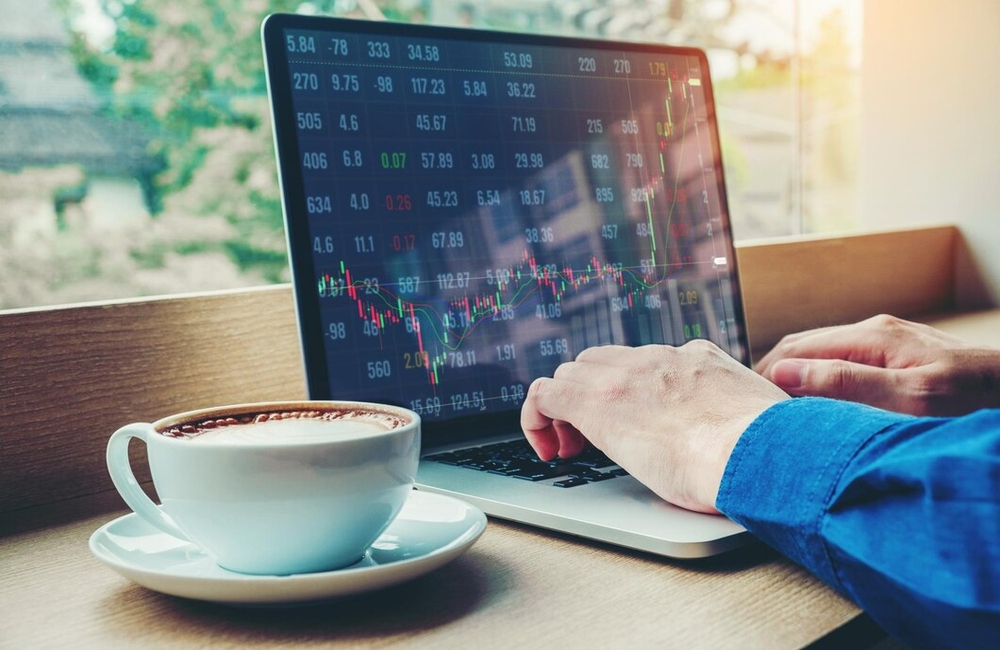ASX futures were 20 points or 0.23pc lower to 6946 at 8am on Friday, suggesting a small dip at the open. Stocks in the US ran out of steam on Thursday, surrendering gains despite more signs that inflation could be peaking.
The S&P 500 slipped 2.97 points, or 0.1%, to 4207.27, while the tech-heavy Nasdaq Composite Index dropped 74.89 points, or 0.6%, to 12779.91. The Dow Jones Industrial Average gained 27.16 points, or 0.1%, to 33336.67. All three indexes were higher earlier in the day. Producer-price data supported investor hopes that inflation may be abating, which could prompt the Federal Reserve to pause its rate increases.
Commodities
In commodity markets, Brent crude oil jumped 2.14% to $US99.48 a barrel, gold dipped 0.31% to US$1,786.81.
Local bond markets: Australian 2 Year government bonds 2.76%, Australian 10 Year government bonds 3.28%. Yields on 2 Year US Treasuries overseas edged lower to 3.23% while 10 Year US Treasury notes backtracked to 2.89%.
The Australian dollar traded at 70.95 US cents, having climbed from 70.78 US cents at the previous close. The Wall Street Journal Dollar Index, which measures the U.S. currency against 16 others, was at 97.07.
Asia
Chinese stocks rose again following the previous day’s declines, led by non banking financials and electronic makers. The country’s central bank said Wednesday that it would increase efforts to support the economy by emphasizing existing measures. The A-shares are attractive in 2H on expected low financing costs and expected upside surprises for earnings, according to a note from Michelle Qi, an Eastspring China analyst. China Life Insurance rose 5.8%, East Money Information soared 7.8%, and Luxshare Precision surged 10%. The Shanghai Composite Index rose 1.6% to 3281.67, the Shenzhen Composite Index gained 1.7% and the ChiNext Price Index ended up 2.4%.
Hong Kong’s Hang Seng Index added to early gains to close up 2.4% at 20082.43, a reflection of the overnight Wall Street rally fed by hopes among investors that the U.S. Fed might delay a rate hike. Consumer stocks led gains. Sports-apparel company Li Ning rose 7.1%, garment maker Shenzhou International was up 7.5%, and sneaker maker Anta Sports Products rose 5.7%. Conglomerate Swire Pacific jumped 10% after swinging to 1H net profit and saying it will buy back shares. Techtronic Industries closed up 11% after it reported an increase in 1H net profit in a filing late Wednesday.
Japan’s Nikkei Stock Average lost 0.65% to end at 27819.33, echoing losses in most regional equity markets. “Today for evidence of such the focus appears to be on the question of whether U.S. CPI is close to a peak with markets preparing for the potential of a big move if there is a surprise on either side of the headline number,” Michael Hewson, chief market analyst at CMC Markets, says in an email. Among the Nikkei’s main losers were electronics companies including Fujitsu, which fell 3.8 per cent, Renesas Electronics, which lost 3.7 per cent and Advantest, which dropped 3.6 per cent. The dollar was at 134.98 yen, versus 135.00 yen in the same period on yesterday which was Tokyo's stock market close. The 10-year Japanese government bond yield rose 3 bps to 0.190%.
Europe
European stock indexes were mixed on Thursday. The pan-European Stoxx Europe 600 rose 0.4%, the German DAX lost 0.05% and the French CAC 40 rose 0.3%.
London’s FTSE 100 slipped 0.5% on Thursday as softening inflation data once again boosted U.S. markets.
“It was ex-dividends across the FTSE 100 that was once again to blame, with the index left in the lurch as Wall Street pushes higher again. On top of that, with the U.S. dollar being sold off further, the risk-on mood has spilled over into currencies boosting sterling and the euro while leaving European markets in the lurch," says Chris Beauchamp, chief market analyst at online trading platform IG.
Pharmaceutical giants GSK and Haleon were the day’s biggest fallers on the FTSE 100 – both closing down 10% and 4.9% respectively – due to concerns over Zantac heartburn medicine legal action.
North America
Stocks have surged in response to a sharp downturn in mid-June. On Wednesday, the Nasdaq Composite closed up more than 20 percent from its low, marking the start of a new bull market, though it was still 18 percent below its level at the start of the year. Small-company stocks, as tracked by the Russell 2000 index, flirted with the same milestone Thursday before pulling back.
The day’s biggest gainers in the S&P 500 were energy stocks Thursday — a common refrain for much of the year. Devon Energy, Marathon Oil and Schlumberger all rose more than 5 percent. The biggest decliners were the consumer discretionary and tech segments, two groups of stocks that have outperformed in recent weeks.
Inflation has been a central focus this year for both investors and the Fed. Interest rates have been raised in recent months by central-bank officials, which serve to increase the costs of borrowing to dampen demand and steady prices. The Fed chairman, Jerome H. Powell, has said multiple times that he is more worried about the risk of allowing high inflation to gain a foothold than he is about raising rates too high and tipping the economy into recession.
Money managers are hoping the cooler inflation data for July is the beginning of a trend, but the direction of inflation will be heavily influenced by the war in Ukraine and how nations respond to Covid-19. Fresh data Thursday added to those hopes, coming from US suppliers who said the prices they pay fell in July from the previous month. The pace at which consumer prices are climbing slowed in July, the Labor Department said Wednesday.
"Perhaps most importantly, inflation data is the key driver of market sentiment. “Depending on the way you slice the numbers you can start to sell a more positive or more negative story,” said Edward Park, who runs U.K. investment firm Brooks Macdonald. Though Wednesday’s inflation data did show energy prices falling, other goods and services showed plenty of pricing pressure still rising, he said.
Still, some investors are betting that the inflation numbers will take pressure off the Fed to push rates up aggressively in the coming months. Employers have been adding hundreds of thousands of jobs a month, and last month, Mr. Powell brushed off concerns that the economy was recession-bound, even as the Fed was raising rates.
Investors also fear that sharp rate hikes could slow the US economy. Recent hiring statistics have suggested that businesses are adding jobs, but investors have also been focused on the pace of layoffs. New data out Thursday revealed that 262,000 Americans filed for unemployment insurance in the week ended Aug. 6, compared to 248,000 the week before.

























